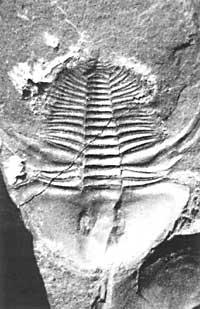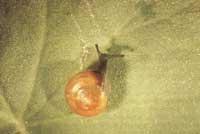Maximum destruction
1992/10/01 Elhuyar Zientzia Iturria: Elhuyar aldizkaria
Did 500 million years ago the greatest destruction occurred? Phil Figura, a researcher at the Californian university, thinks so.
In the circle of evolution, the Cambrian is a very important period, since it was then that the first animals of the hard shell appeared. At the time of the Tommótico of the beginning of the Cantabrian period small shells appeared. Subsequently, trilobites, clams shaped brachiopods and animals appeared in the form of hard shell sponge called archeoziatide.

Paleontologists knew that the fauna and archeoziatids of the smaller shell had disappeared at the end of the Cambrian. After analyzing the data of the entire earth, Signor says that the destructions were simultaneous. In his opinion, 83% of the hard-bodied animals of the Botanical Age of the beginning of Cambodia failed to survive in the Toyonic at the end of the Cambo. The diversity of organisms of this time compared to those of the botanical era was 35% and the disappearance ratio in this genre was 77%.
According to Signor, the great destruction occurred in the Botomian was much greater than that occurred in the Permia period after 245 million years. So far it has been considered that the greatest devastation occurred in the Permia.
The destruction of the botomanic affected mainly the smaller shell fauna and the archeoziatids. For example, 70% of Botomian trilobites disappeared, but unlike other cases, they were replaced by other trilobites.
Signor is based on a Russian system developed for Siberia and has subsequently carried out extrapolations. However, some researchers disagree with the method of work used by Signor and the debate is now boiling.
The issue is important, there are many researchers trying to set the main axes of evolution. Therefore, the reader will increase the information on this subject sooner than expected.

Gai honi buruzko eduki gehiago
Elhuyarrek garatutako teknologia




